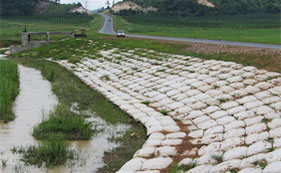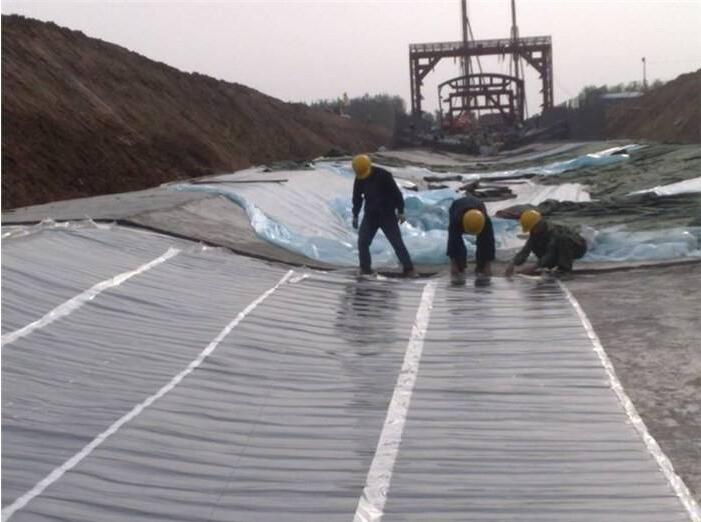
 Back to List
Back to List

I. Basic surface requirements
1. Before laying HDPE geotechnical film, it shall conduct a comprehensive inspection on the laid basement together with the civil construction party, construction party, design party and owner, meet the design requirements and construction conditions, and make inspection records before construction.
2. The quality of foundation surface shall meet the design requirements: foundation surface of foundation pit, slope surface and its slope ratio, anchoring groove on slope, treatment of intersection of slope and semilaterials, and the foundation surface of concrete structure of warehouse wall shall meet the design requirements strictly.
3. The base surface should be dry, compact, flat, without cracks, obvious spikes, mud or depression. There should be roots, rubble, stones, reinforcement heads and glass chips inside the 25mm vertical depth.
Its flatness should change gently within the allowed range, with uniform and consistent slope.
4. The shadow at the yin-yang Angle on the base surface is smooth and transitional. The root of the column should be in the shape of an arc.
5. The surface of the base is dry, and the moisture content should be below 15%.
6. The base shall be compact and uniform, and the dry density of the soil base shall not be less than 1.4t/㎡.
7. Construction of geomembrane can be carried out after acceptance and approval of civil construction, supervision, design unit, owner and general contractor.
II. Climatic requirements for construction
1. Generally, the temperature should be above 5 degrees Celsius. The geomembrane should be tense at low temperature and relaxed at high temperature.
2. The wind force is below category 4.
3. When the temperature is too low, the construction should not be carried out in gale, rain or snow weather above Grade 4.
4. In windy weather, when the wind affects the construction of geomembrane, the HDPE geomembrane to be welded should be pressed firmly with sand bag.
III.The laying of HDPE geomembrane
1. Prior to the laying of HDPE geotechnical film, the corresponding acceptance certificate of civil engineering shall be provided.
2. Before cutting HDPE anti-seepage film, it should accurately measure the relevant size, and then cut according to the actual size, generally not according to the size shown in the picture, should be numbered piece by piece, detailed record on the special form.
3. The laying of HDPE geomantic film should make every effort to minimize the welding seam, and save raw materials as much as possible under the premise of ensuring the quality.
It is also easy to ensure quality.
4. The lap width of the joints between films is generally no less than 10cm, which usually makes the alignment direction of the weld parallel to the maximum slope, that is, along the slope direction.
5. Generally, in corners and deformed areas, joint lengths should be kept as short as possible.
Except for special requirements, no welds shall be arranged as far as possible on slopes with gradient greater than 1:6 and within 1.5 meters from top slope or stress concentration area.
6. During the laying of HDPE geomemes, artificial folds should be avoided. When the temperature is low, the geomemes should be tensioned and smoothen as far as possible.
7. After the laying of HDPE geomembrane, it is necessary to minimize the walking and moving tools on the surface of HDPE membrane. Objects that can cause harm to HDPE membrane should not be placed on the membrane or carried to walk on the membrane, so as to avoid accidental damage to the membrane.